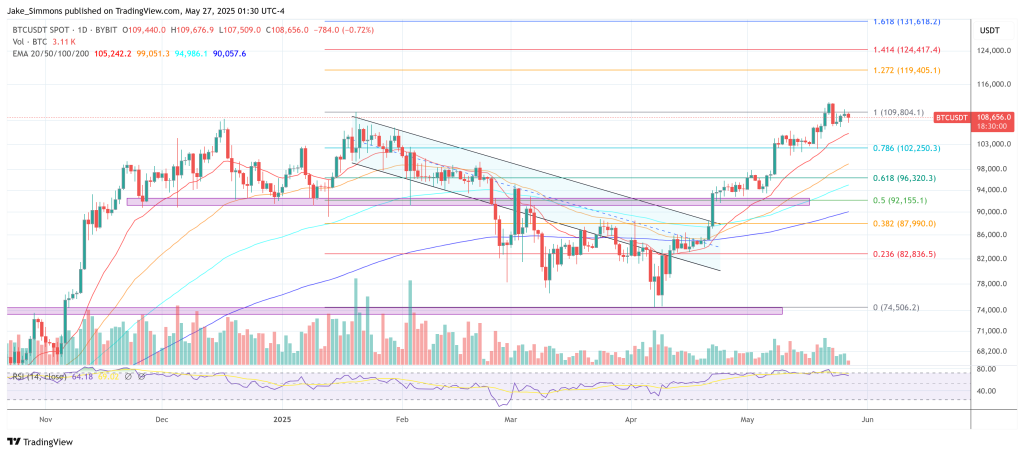At the Bitcoin 2025 conference on May 26, when Michael Saylor stepped onto the sidelines, the audience was prepared for his customary enthusiasm from the individual who transformed a software firm into essentially a Bitcoin storage facility. However, what they got instead was an intricate, almost critical analysis of the industry’s preferred transparency trope: on-chain proof-of-reserves.
Why A Bitcoin Proof Of Reserves Is A Bad Idea
The idea originated from Mitchell Askew, the lead analyst at Blockware Solutions. Proudly declaring himself as an admirer of your work, Askew inquired if Strategy intended to disclose its on-chain addresses for outsiders to authenticate a supposed multibillion-dollar stockpile. Saylor was direct and unambiguous in his response.
As an analyst, I find myself reflecting on the topic of proof-of-reserves (PoR). The recent events at FTX and Mt. Gox have certainly sparked discussions, but I question if the broader institutional community is fully grasping the lessons that are essential moving forward.
My perspective is twofold: firstly, current PoR implementations can potentially be detrimental. Secondly, an ideal PoR falls short because it fails to account for liabilities – a crucial aspect of solvency that it overlooks.
Saylor’s opening was vividly descriptive. He compared publishing institutional wallets to broadcasting the addresses, bank accounts, phone numbers of all your children and then expecting that to somehow improve your family. For him, what others call radical transparency is, in reality, an “opportunity for hackers, nation-state actors, every type of troll you can imagine.
He encouraged the audience to imagine a scenario using generative AI: ‘Imagine interacting with the AI, setting it to ponder deeply on the subject, and then inquiring about the security concerns associated with sharing your wallet information… The output will be a comprehensive book, approximately fifty pages long, detailing various security problems.
According to Saylor, the problem lies in the structure itself. When a public entity reveals its cold storage, all subsequent transactions with coins can be traced, giving adversaries the ability to predict treasury timing or take advantage of change-address tactics. In simpler terms, the existing, insecure proof-of-reserves actually weakens the security not only for the issuer but also for custodians, exchanges, and investors.
Assets Without Liabilities Are A Bitcoin “Parlor Trick”
In its current form, Proof of Assets (PoA) seems to overlook the debt side of financial statements. To put it simply, having assets like $63 billion in Bitcoin doesn’t necessarily mean you have corresponding liabilities of a similar amount. The speaker emphasized this point using an amusing analogy: If he were to claim that he has a wallet with $72 billion, institutional investors would find it laughable if he didn’t address the issue of his liabilities.
To win over institutional investors, Saylor advocates a unique approach: “They demand solid evidence of assets and debts, with the two figures subtracted. The most effective strategy isn’t to reveal the digital wallet. Instead, it would be wiser… to have a Big Four auditor verify that you indeed possess the Bitcoin. Then, the auditor should also ensure that the company hasn’t used the Bitcoin as collateral or pledged it. After verification, the Bitcoin should pass through a public company where the CFO, CEO, chairman, and all outside directors are personally and criminally responsible for it.
The main point is that Saylor argues that auditor attestation is more reliable than cryptographic proofs because the threat of prison serves as a stronger deterrent than any public Merkle tree snapshot.
In other words, he suggests that people trust US companies due to regulations like Sarbanes-Oxley, which means that if someone lies, they could face jail time. This is more effective in ensuring truthfulness than relying on a public record or verification system like a Merkle tree snapshot.
The type of rhythm or schedule he mentioned is commonly known to securities lawyers but seldom brought up at Bitcoin gatherings: the quarterly Form 10-Qs and annual Form 10-K filings, along with periods where capital markets activity is prohibited until those documents are approved. Essentially, if a company can’t submit a 10-K, it suggests that their auditors won’t validate their financial records, which might indicate that the company isn’t financially stable. On the other hand, failing to meet a self-imposed PoR deadline doesn’t have any legal consequences.
A Solution For The Future?
In a potential scenario, Saylor acknowledges that Strategy could potentially be involved. He suggests, “At some stage, I envision incorporating a type of proof-of-reserves, if you manage to devise a zero-knowledge proof that conceals the ability to trace the underlying wallets.” However, even with this, administrative challenges persist: custodians, exchanges, auditors, risk managers, officers, and directors would all need to agree, and the method should still align with GAAP audit requirements.
Avoid doing business with unstable overseas exchanges run by immature individuals. If you’re involved in crypto, hold your own crypto.” In other words, according to PoR, the focus should be on basic counterparty diligence rather than relying excessively on on-chain data.
He added that the concept holds true for corporate treasuries as well. Currently, our Bitcoin is stored in various regulated custodians and can only be accessed through documented, multi-signature processes. However, he expressed a viewpoint that while it’s acceptable at a small scale, [PoR] isn’t an absolute solution. He believes people might overestimate its value on X.
At press time, BTC traded at $108,656.

Read More
- PENGU PREDICTION. PENGU cryptocurrency
- Gold Rate Forecast
- KAS PREDICTION. KAS cryptocurrency
- USD1 PREDICTION. USD1 cryptocurrency
- LSETH PREDICTION. LSETH cryptocurrency
- VET PREDICTION. VET cryptocurrency
- EUR TRY PREDICTION
- USD CNY PREDICTION
- METH PREDICTION. METH cryptocurrency
- FIL PREDICTION. FIL cryptocurrency
2025-05-27 12:19